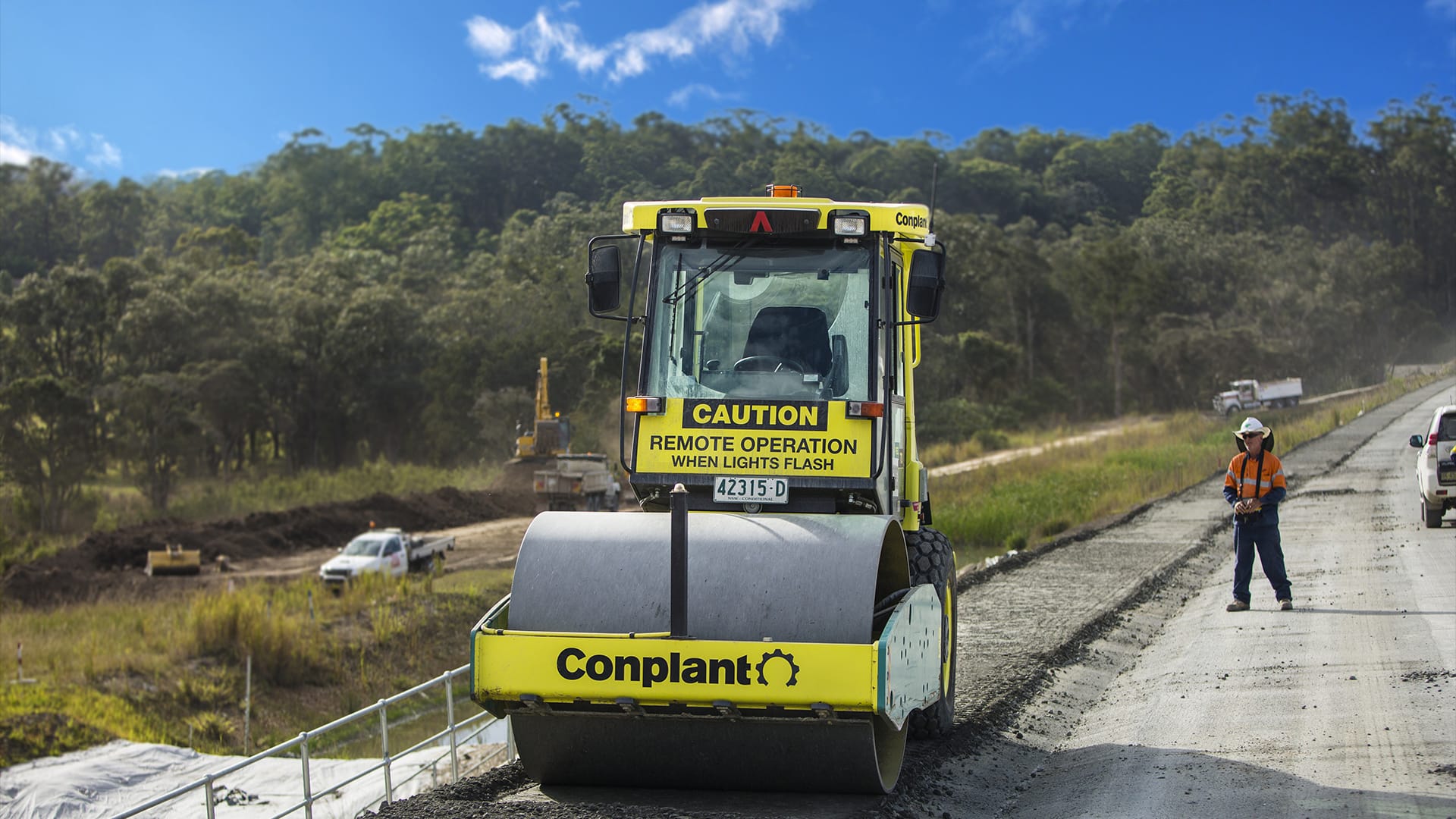How to operate an excavator: A beginner’s guide
Excavators are incredibly useful for all kinds of construction projects. They’re user-friendly and versatile, excelling in tasks ranging from drilling, digging and levelling to moving large objects. But to make the most of their capabilities and operate them safely, there are some key procedures to follow.
While this article only provides a basic overview of safe operational procedures, we link to several authoritative resources where you can seek out further detail and certification. We also strongly recommend referring to the operator’s manual for guidance specific to your excavator model.
Contents
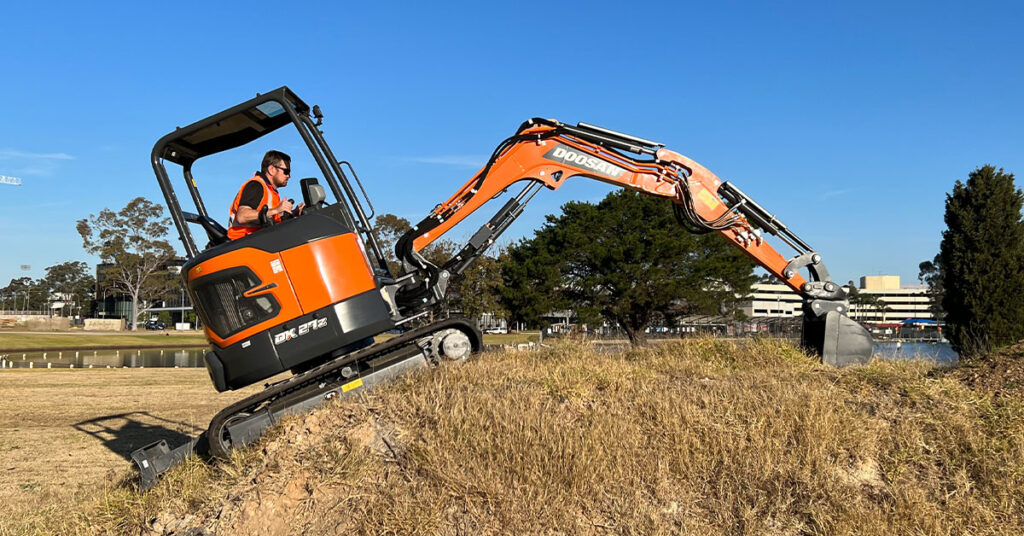
What are the operational requirements?
Since the introduction of the Workplace Health and Safety Act 2011, formal qualifications are no longer mandatory for operating an excavator in Australia.
Responsibility for ensuring safe operation now falls on the business owner or site manager, aka the ‘PCBU’ (Person Conducting a Business or Undertaking). The PCBU must ensure that operators are competent in handling the equipment and are well-versed in WHS regulations, proper operating procedures, material handling, and basic maintenance.
While you may not need a licence to operate an excavator, you will need to show that you are competent and responsible enough to handle the machinery safely. Demonstrating ‘proof of competency’ is often preferred by employers, especially in major cities like Sydney and Melbourne. This proof can be obtained in various ways, including formal training certificates or competency cards.
Requirements and guidelines can differ by state, so it’s important to check reliable sources like Safe Work Australia, WorkSafe Victoria, or SafeWork NSW for specific details.
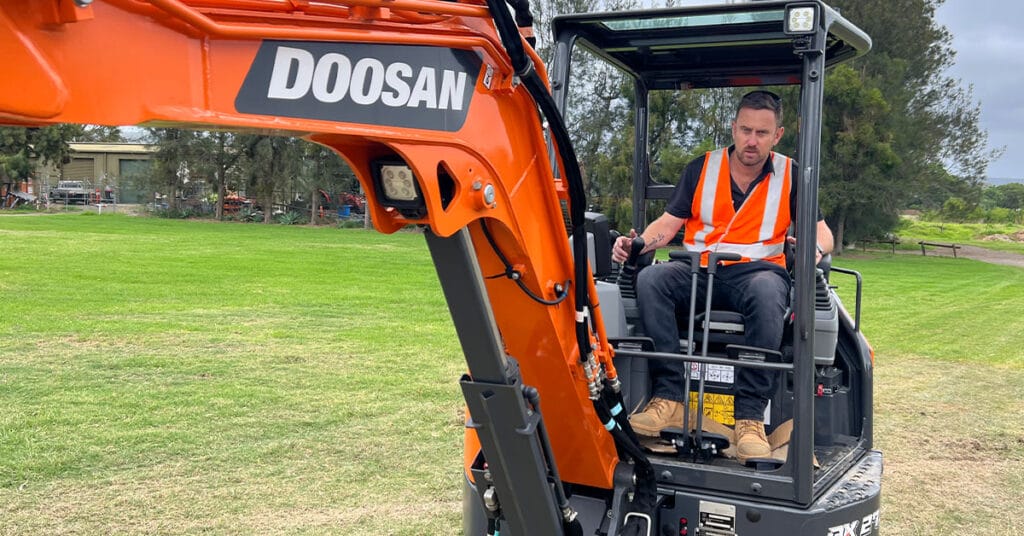
How do you learn to operate the excavator?
The best way to learn to operate an excavator safely and effectively is by getting certified through a recognised training organisation.
Many technical colleges and vocational training centres like TAFE and the Construction Industry Training Board (CITB) offer courses on heavy machinery operation. These courses generally cover topics such as machine operation, safety protocols, basic maintenance, and environmental considerations.
In addition to formal training, gaining practical experience under the supervision of a skilled operator is invaluable. Many employers offer on-the-job training or apprenticeships that allow new operators to develop their skills in the real world.
Combining practical experience with formal training contributes to a safer and more professional workforce, helping to reduce the risk of accidents and promote strong industry standards.
Familiarise yourself with the excavator
Before you even start the engine, it’s crucial to acquaint yourself with the various controls and features of the excavator.
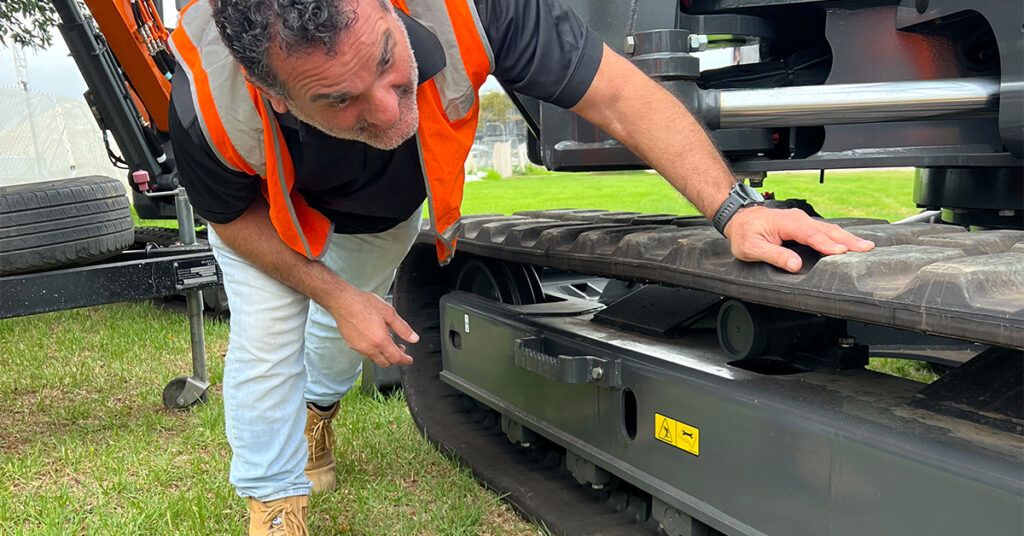
Excavator controls
First, start by familiarising yourself with the levers, pedals, and joysticks that control the machine’s movement, boom, arm, and bucket. That’s because excavator controls can vary among different models and manufacturers, especially when it comes to joysticks.
In Australia, the two most commonly used joystick operational patterns for excavators are ISO and BHL (Backhoe Loader) controls.
- ISO controls. ISO has been the standard operating pattern for the past two decades. The right-hand joystick controls the bucket’s tilt, as well as the boom’s upward and downward movement. The left-hand joystick controls the stick in and out (extension and retraction) and the swing of the upper structure left or right.
- BHL controls. BHL stands for ‘backhoe loader’. The right-hand joystick controls the boom’s upward and downward movement and the stick’s extension and retraction. The left-hand joystick controls the swing of the upper structure and the tilt of the bucket.
Develon, like most excavator models available in Australia, enables operators to manually switch between ISO to BHL configuration. The configuration is determined by a valve, the location of which depends on the model of excavator. To locate the valve, refer to the operator’s manual of your machine.

Safety features
Every excavator is equipped with a range of safety features designed to protect the operator, other workers, and the site itself. This usually includes safety belts, rollover protective structures (ROPS), and falling object protective structures (FOPS).
Modern excavators often come with advanced safety technologies like rear-view cameras and proximity sensors. It’s crucial to understand how and when to use these features to maximise your safety while operating the machine.
Run pre-operational checks
Before you get any machinery started, always begin by conducting a visual inspection of the equipment and checking fluid levels.
Visual inspection
A visual inspection involves a thorough examination of the excavator’s exterior components and attachments. Check for any signs of damage, wear, or loose parts such as hydraulic hoses, bucket teeth, or tracks.
This step is vital as it helps identify potential safety hazards and ensures that the machine is in good working condition. By addressing issues before starting the operation, you can prevent accidents and breakdowns, ultimately saving time and money.
Fluid levels
Maintaining optimal fluid levels extends the lifespan of the machine and ensures its reliability and efficiency during operation.
Be sure to inspect engine oil, hydraulic fluid, coolant, and fuel levels regularly. Insufficient or contaminated fluids can lead to engine overheating, decreased performance, or even equipment damage and failure.
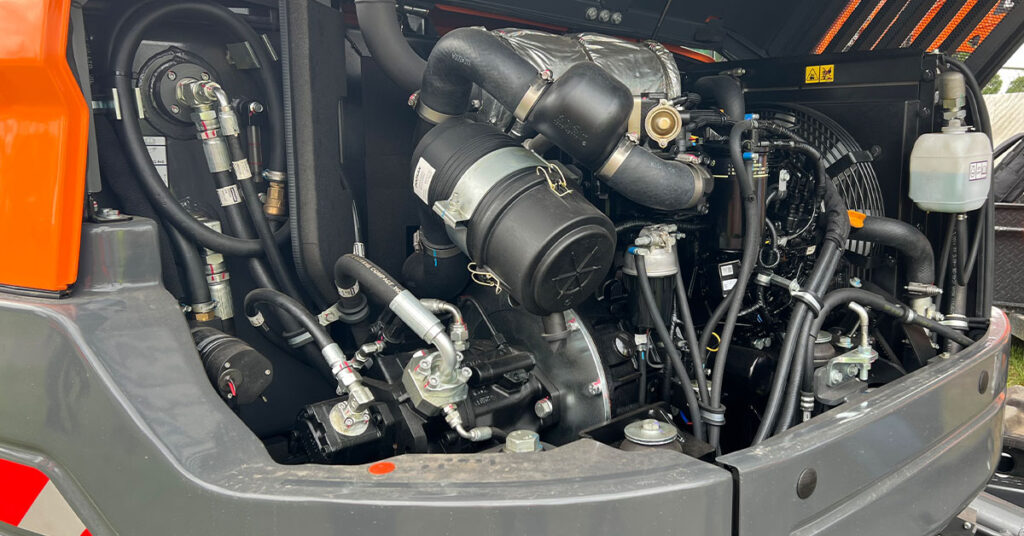
Perform safety procedures
Here are the top 3 safety checks to conduct before you start operating your machine.
Maintain safe distance
When operating an excavator, it’s crucial to maintain a safe distance from other workers, equipment, and potential hazards. The swing radius of an excavator can be quite large, and you don’t want to risk hitting anyone or anything while operating.
It’s generally advised to have a minimum distance of at least twice the length of the excavator arm between the machine and any obstacles or persons. This ensures ample space for machine operation. For specific guidelines on maintaining a safe distance, consult the Safe Work Australia guide.
Secure work area
Creating a secure work area is another crucial safety procedure. This involves establishing clearly marked boundaries and safety barriers to keep unauthorised personnel at a safe distance. The ground should also be inspected for stability and load-bearing capacity to prevent any accidental tipping or sinking of the machine.
Site-specific hazard assessments should be carried out, and all workers should be briefed on emergency procedures. Reputable industry sources such as the Construction & Mining Equipment Industry Group can provide more detailed information on this subject.
Check your surroundings
Never underestimate the importance of situational awareness while operating heavy machinery like an excavator. Always be aware of your surroundings, including what’s above and below you.
Check for overhead obstacles like power lines or tree branches, as well as subterranean hazards like utility lines. Having a spotter on the ground to assist with these checks is recommended. Best practices in this area can often be found through industry standards such as those published by WorkCover NSW.
Lastly, you should know your machine’s load capacity and adhere to it strictly to prevent tipping and structural damage.
Starting the Excavator
Now that you’ve ticked the pre-operational and safety boxes, it’s time to get the engine humming.
Seat position and seat belt
Your seat should be adjusted so that you can:
- Comfortably reach all controls without straining
- Maintain a clear view of your surroundings
This will improve safety, maximise your control over the machine, and minimise fatigue during long operating hours.
After finding the right seat position, don’t forget to fasten your seatbelt. It’s not just a regulatory requirement; it’s an additional layer of safety that keeps you secure in the event of sudden movements or impacts.
Engine start-up
Before you turn the key or push the ignition button, double-check that all controls are in their neutral positions to prevent unintended movements. Engage any safety locks or systems as recommended in the operator’s manual.
When everything is set, insert the key into the ignition and turn it to the ‘on’ position, allowing the machine’s systems to initialise. Once the system checks are complete, turn the key further to start the engine.
Make sure the engine is idling smoothly before engaging any controls or starting any excavation work. Listen out for any unusual noises that might indicate mechanical issues, and monitor the instrument panel to ensure that all systems are functioning correctly.
Operating the excavator
With the safety checks complete and the engine running, you’re now ready to get to work.
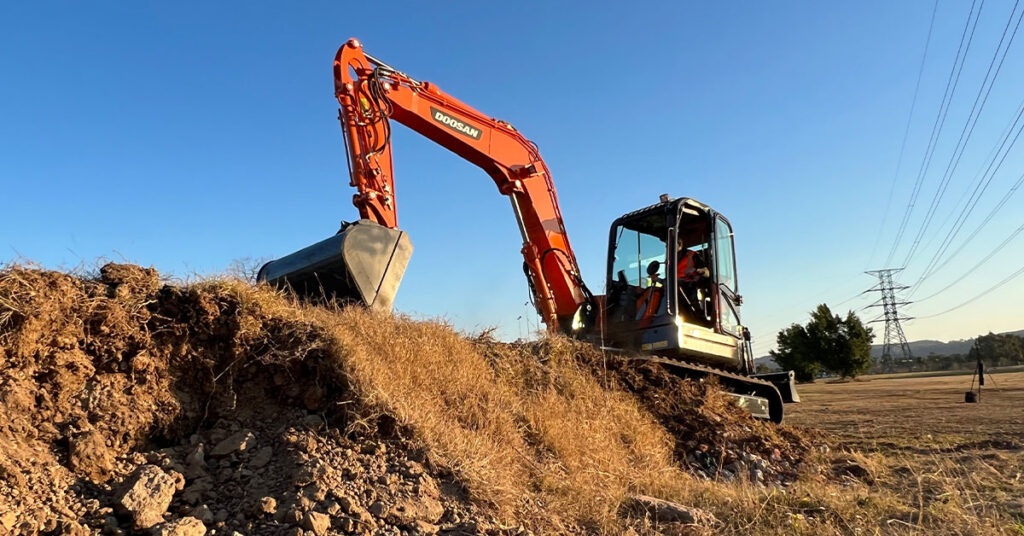
Basic movements
The first step in operating the excavator is mastering the basic movements, which generally involve steering and propulsion. Depending on your machine, this could be via tracks or wheels. The controls for these movements are usually operated via the joysticks or foot pedals.
Typically, the excavator has two joysticks that control the forward and backward movements of the machine’s left and right tracks independently. Pushing the left joystick forward will activate the left track, causing the machine to turn towards the right — and vice versa. If you want the excavator to move in a straight line, you’ll need to push both joysticks forward simultaneously.
And don’t forget the lock lever: you need to disengage it to set the machine in motion.
Operating the arm and bucket
Once you’re comfortable with basic movements, you can focus on the excavator’s arm and bucket — the real stars of any excavation project. The arm’s reach, angle, and force are primarily controlled through one joystick, while the bucket’s tilt and orientation are controlled by the other.
It’s important to maintain a steady hand to prevent jerky motions that can destabilise the machine. This will ensure you can safely manoeuvre the excavator to perform tasks effectively.
Shutting down the excavator
Done for the day? There are some key steps to follow to maximise your excavator’s lifespan and ensure that it’s ready for the next day.

Parking location
Choosing the right parking location for your excavator is more important than it may seem. Always park on level ground to prevent tipping or rolling. Additionally, ensure the parking area is far from pedestrian pathways or busy areas to avoid delays or obstructions to other works that are being carried out on site. Depending on the terrain, you might also need to consider drainage and the
Engine shutdown
Before turning off the engine:
- Ensure that all hydraulic attachments are lowered to the ground to relieve pressure from the hydraulic system.
- Engage the machine’s parking brake to prevent any inadvertent movement during shutdown.
Now allow the engine to idle for a few minutes to stabilise the internal temperature and prevent thermal stress and potential damage to the engine components. Once the engine has cooled off, gradually reduce the throttle and wait for the engine to settle into a smooth idle. Then, turn off all auxiliary attachments and functions, such as the boom, arm, and bucket controls.
Finally, turn the ignition key to the ‘off’ position and ensure that all lights, indicators, and displays are turned off. Properly shutting down the excavator is a safety requirement, but also helps extend your machine’s lifespan.
Summary
Whether you’re operating a mini excavator or a larger machine, there are several factors to consider to ensure both efficient and safe operation. From the initial pre-operational checks to the very end of the working day, each step comes with its own set of guidelines and best practices.
While formal qualifications may not be mandatory in Australia, obtaining certification through recognised training organisations is highly recommended.
In short, operating an excavator demands skill, attention to detail, and a strong commitment to safety.
Looking for new excavators to stock? Check out our range.



